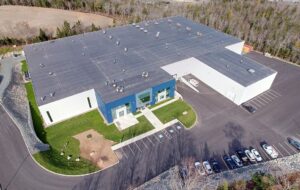There is a small but growing agtech startup scene developing in Latin America. To learn more about it, the Rethink events team is putting on a dedicated Latin America workshop during its upcoming Rethink Ag & Food Innovation Week in San Francisco.
The workshop will take place at the end of the World Agri-Tech Innovation Summit on March 29.
Yuri Soares, unit chief of Climate Smart Agriculture at Inter-American Development Bank’s Multilateral Investment Fund (MIF) is one of the speakers.
We caught up with him to find out more about how the multinational development bank is looking at agritech and supporting innovation.
Which part of the Inter-American Development Bank do you work in?
IADB is a multilateral development bank with two main windows; one is the sovereign-guaranteed lender, and the other is IIC, which makes private sector deals. There’s a third window which is the Multilateral Investment Fund (MIF), which works across both the public and private sectors and is heavily focused on innovation. It was founded more than 20 years ago and offers equity and debt finance with blended financing and grants. We take a lot of risk, and do deals where markets are still embryonic and where we’re still testing the commercial viability of different types of innovation.
Why is MIF now focusing on agriculture technology?
We have different initiatives and projects we pursue at MIF, and around a year ago we approved a strategy around climate smart agriculture and agricultural productivity. Under this strategy, we are highly focused on innovations that can increase agricultural productivity in Latin America, mitigate the effects of agriculture on the environment, or adapt to the world’s changing climate.
We have various initiatives underway to finance climate-smart agriculture and agtech including funding producer cooperatives, foundations, and private sector companies. We mainly finance agtech startups through venture capital funds.
Have you invested in any agtech funds yet?
We have invested in NXTP Labs in Argentina, which is an accelerator VC investing across sectors, but including agtech. Out of that, we have had some very interesting startups including BoosterAgro, which is working in big data and climate data for agriculture using artificial intelligence. Their value proposition is to bring climate and satellite data together to obtain more precise information about productivity and the changing patterns of yield and productivity, with respect to weather.

We are also now looking to make investments in coastal innovation funds, forestry funds, and firms addressing climate change in the cattle industry, which is a huge contributor to carbon emissions. It’s also an industry where a relatively scalable technological innovation can produce a high impact in terms of mitigation and adaptation benefits.
There are very few funds in the market today that are working on forestry innovation to mitigate and adapt to climate change, so we are working with some sponsors to try and support first-movers. It’s a similar situation for the ocean fund.
What do you look for in an investment?
We want to move the needle on carbon emissions, and so we can’t invest in small things. The idea is to go in and test things that could be really scalable. But we’re very much an experimental outfit and backing very early stage projects. We also wouldn’t fund anything that doesn’t have the proximate possibility of being a technology that’s adopted industry-wide.
What experience does MIF have investing in agriculture in the past?
We used to have an area called ‘natural capital’ where we worked with different projects such as the first to promote resilience in a very dry region of Central America. It was the first effort I knew of working across several municipalities to be resilient to droughts, and this public-private-partnership was a very pioneering effort. MIF was doing these types of natural capital projects as far back as 20 years ago, but they weren’t organized with the objective of productivity and environmental benefit.
We are investors in FOPEPRO, a smallholder investor fund based in Belgium with over 40 investments in producer associations in the region. And we have supported Root Capital with grants and loans in the past. Both have focused on small farmer organizations.
My background is in development and agricultural economics.
How do you see the agtech startup space developing in Latin America?
It’s still immature, but it’s changing rapidly. IADB is working on a scoping study of potential startups in the region, and so we will see how many there. I haven’t found there to be many. As the space develops, it will be similar to other agtech centers globally like the US, and there will be companies that won’t have exponential growth potential, but equally won’t have a large downside and investment returns will be concentrated in the median multiple. There will be a higher concentration in Brazil, Argentina, Mexico, and Colombia, as these are more sophisticated countries with good universities, a startup financing ecosystem, and entrepreneurial communities. All of those factors are going to create a huge advantage.
What are you most excited about in ag innovation?
I personally am very interested in the technology that’s going to have an impact on value chain resilience. Artificial intelligence is also starting to play a big role in ag, and I think that is also something we should keep our eye on. The amount of data available, from climate data to satellite imagery to ground measurements, is so overwhelming and so impressive in granularity and quality, that it matches very well with AI approaches.
Will you continue to invest in agtech through funds?
We will do both fund and individual investments. MIF doesn’t issue bonds, and we don’t have a balance sheet in a conventional sense; we are funded with pledges to the MIF from different governments as well as private sector foundations. That allows us to take on more risk than tradition investors and live with potentially lower returns. We don’t have a target return set for funds or specific investments made and hope to serve as a de-risking source of finance. It’s hard to have a target risk and return when you have a more catalytic role.
How do you measure your success?
Each investment will have its own criteria but broadly, for agriculture, this will be based on productivity and environmental outcomes of the company or project.
Image credit: Karina Rodriguez




